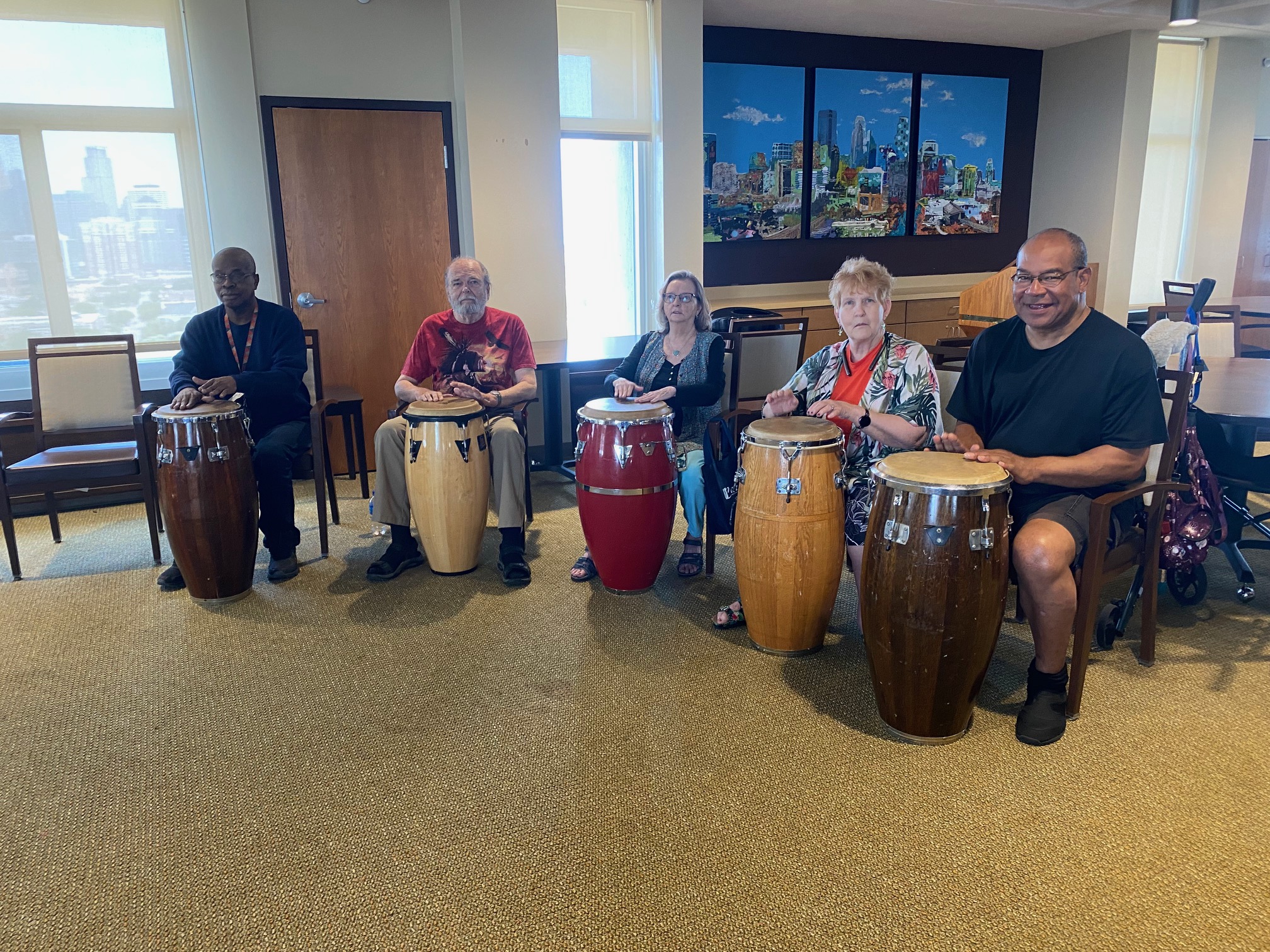Blog
The Propeller Nebula (Simeis 57) is part of a vast and rich HII-region in Cygnus, known as Cygnus X Complex.
It was catalogued first in the early 1950s by astronomers at the Crimean Astrophysical Observatory at Simeiz, Ukraine, as the 57th object in a catalogue containing 306 HII regions.
The Propeller Nebula is often incorrectly referred as DWB 111, but DWB 111 identifies only the southern (lower) arm, while the northern one is DWB 119.
The DWB catalog, developed by H. R. Dickel, H. Wendker and J. H. Bieritz in 1969, cataloging 193 distinct objects as part of their study of Hα-emission nebula in the Cygnus X region of the sky.
The Propeller Nebula is probably about 5,500 light-years away from Earth.

more...
Branford Marsalis (born August 26, 1960) is an American saxophonist, composer, and bandleader. While primarily known for his work in jazz as the leader of the Branford Marsalis Quartet, he also performs frequently as a soloist with classical ensembles and has led the group Buckshot LeFonque. From 1992 to 1995 he led the Tonight Show Band.
Marsalis was born on August 26, 1960, in Breaux Bridge, Louisiana, and raised in New Orleans. He is the son of Dolores (née Ferdinand), a jazz singer and substitute teacher, and Ellis Louis Marsalis, Jr., a pianist and music professor. His brothers Jason Marsalis, Wynton Marsalis, and Delfeayo Marsalis are also jazz musicians.
more...Leon Redbone (born Dickran Gobalian; August 26, 1949 – May 30, 2019) was a singer-songwriter and musician specializing in jazz, blues, and Tin Pan Alley classics. Recognized by his hat (often a Panama hat), dark sunglasses, and black tie, Redbone was born in Cyprus of Armenian ancestry and first appeared on stage in Toronto, Canada, in the early 1970s. He also appeared on film and television in acting and voice-over roles.
In concert Redbone often employed comedy and demonstrated his skill in guitar playing. Recurrent gags involved the influence of alcohol and claiming to have written works originating well before he was born – Redbone favored material from the Tin Pan Alley era, circa 1890 to 1910. He sang the theme to the 1980s television series Mr. Belvedere and released eighteen albums.
Redbone was elusive about his origins, and he never explained the origin of his stage name. According to a Toronto Star report in the 1980s, he was once known as Dickran Gobalian, came to Canada in the mid-1960s, and changed his name via the Ontario Change of Name Act. Biographical research published in 2019 corroborated his birth name, and stated that his family was of Armenian origin. His parents lived in Jerusalem, but left in 1948 for Nicosia, Cyprus, where Redbone was born. By 1961, the family had moved to London, England, and by 1965 to Toronto.
more...
This stunning JWST image of M104, also known as the Sombrero galaxy, is one of the largest mosaics ever assembled from JWST observations. The hallmark of the nearly edge-on galaxy is a brilliant, white, bulbous core encircled by thick dust lanes comprising the spiral structure of the galaxy. This dust lane is the site of star formation in the galaxy. The center of M104 is thought to be home to a massive black hole.
Hubble easily resolves the Sombrero galaxy’s rich system of globular clusters, estimated to be nearly 2,000 in number — 10 times more than the number of globular clusters in our Milky Way galaxy. The ages of the clusters are similar to those in the Milky Way, ranging from 10-13 billion years old. Embedded in the bright core of M104 is a smaller disk (not visible in the image), which is tilted relative to the large disk. X-ray emission suggests that there is material falling into the compact core, where a one-billion-solar-mass black hole resides.
With an apparent magnitude of 8, the Sombrero galaxy is beyond the limit of naked-eye visibility but can be spotted through small telescopes most easily during May. M104 is located 28 million light-years away in the constellation Virgo, and with a mass equal to 800 billion suns, it is one of the most massive objects in the Virgo galaxy cluster.
M104 was discovered in 1781 by the French astronomer and comet hunter Pierre Méchain, one of Charles Messier’s colleagues.

more...
Leonard Bernstein (/ˈbɜːrnstaɪn/ BURN-styne; August 25, 1918 – October 14, 1990) was an American conductor, composer, pianist, music educator, author, and humanitarian. Considered to be one of the most important conductors of his time, he was the first American conductor to receive international acclaim. Bernstein was “one of the most prodigiously talented and successful musicians in American history” according to music critic Donal Henahan. Bernstein won seven Emmy Awards, two Tony Awards, 16 Grammy Awards including the Lifetime Achievement Award, and the Kennedy Center Honor.
As a composer, Bernstein wrote in many genres, including symphonic and orchestral music, ballet, film and theatre music, choral works, opera, chamber music, and pieces for the piano. His best-known work is the Broadway musical West Side Story, which continues to be regularly performed worldwide, and has been adapted into two (1961 and 2021) feature films. Bernstein’s works include three symphonies, Chichester Psalms, Serenade after Plato’s “Symposium”, the original score for the film On the Waterfront, and theater works including On the Town, Wonderful Town, Candide, and his Mass.
Bernstein was the first American-born conductor to lead a major American symphony orchestra. He was music director of the New York Philharmonic and conducted the world’s major orchestras, generating a significant legacy of audio and video recordings. Bernstein was also a critical figure in the modern revival of the music of Gustav Mahler, in whose music he was most passionately interested. A skilled pianist, Bernstein often conducted piano concertos from the keyboard. He was the first conductor to share and explore classical music on television with a mass audience. Through dozens of national and international broadcasts, including Young People’s Concerts with the New York Philharmonic, Bernstein sought to make music both intelligible and enjoyable to all. Through his educational efforts, including several books and the creation of two major international music festivals, Bernstein influenced several generations of young musicians.
A lifelong humanitarian, Bernstein worked in support of civil rights, protested against the Vietnam War, advocated nuclear disarmament, raised money for HIV/AIDS research and awareness, and engaged in multiple international initiatives for human rights and world peace. He conducted Mahler‘s Resurrection Symphony to mark the death of president John F. Kennedy, and in Israel at a world famous concert, Hatikvah on Mt. Scopus, after the 1967 war.[14] The sequence of events was preserved for posterity in a documentary entitled Journey to Jerusalem. At the end of his life, Bernstein conducted a historic performance of Beethoven‘s Symphony No. 9 in Berlin to celebrate the fall of the Berlin Wall. The concert was televised live, worldwide, on Christmas Day, 1989.
Born Louis Bernstein in Lawrence, Massachusetts, Bernstein was the son of Jewish parents, Jennie (née Resnick) and Samuel Joseph Bernstein, both of whom immigrated to the United States from Rivne (now in Ukraine).
more...
Pat Martino (born Patrick Carmen Azzara; August 25, 1944 – November 1, 2021) was an American jazzguitarist and composer. He has been cited as one of the greatest guitarists in jazz.
Martino was born Patrick Carmen Azzara in Philadelphia, Pennsylvania, United States, to father Carmen “Mickey” Azzara (d. 1990) and mother Jean (née Orlando, d. 1989). He was first exposed to jazz by his father, who sang in local clubs and briefly studied guitar. Pat studied with renowned jazz teacher Dennis Sandole, and in his studio met other of Sandole’s students; among them, John Coltrane, James Moody, McCoy Tyner and others. Martino began playing professionally at the age of 15 after moving to New York City. He lived for a period with Les Paul and began playing at jazz clubs such as Smalls Paradise. He later moved into a suite in the President Hotel on 48th Street. He played at Smalls for six months of the year, and played summers at the Club Harlem in Atlantic City, New Jersey.
more...Wayne Shorter (August 25, 1933 – March 2, 2023) was an American jazz saxophonist, composer and bandleader. Shorter came to mainstream prominence in 1959 upon joining Art Blakey‘s Jazz Messengers, for whom he eventually became the primary composer. In 1964 he joined Miles Davis‘s Second Great Quintet, and then co-founded the jazz fusion band Weather Report in 1970. He recorded more than 20 albums as a bandleader.
Many Shorter compositions have become jazz standards, and his music has earned worldwide recognition, critical praise, and commendation. Shorter won 12 Grammy Awards. He was acclaimed for his mastery of the soprano saxophone since switching his focus from the tenor in the late 1960s and beginning an extended reign in 1970 as DownBeat‘s annual poll-winner on that instrument, winning the critics’ poll for 10 consecutive years and the readers’ for 18. The New York Times music critic Ben Ratliff described Shorter in 2008 as “probably jazz’s greatest living small-group composer and a contender for greatest living improviser”. In 2017, he was awarded the Polar Music Prize.
Wayne Shorter was born in Newark, New Jersey; the son of Louise and Joseph Shorter. He graduated from Newark Arts High School in 1952. He loved comic books and science fiction growing up, as well as music. Shorter was encouraged by his parents to take clarinet lessons at age 16 and then switched to tenor saxophone prior to enrolling at New York University in 1952. His older brother Alan played alto saxophonebefore switching to the trumpet in college. While in high school, Wayne also performed with the Nat Phipps Band in Newark. After graduating from New York University with a degree in music education in 1956, Shorter spent two years in the U.S. Army, during which time he played briefly with Horace Silver. After his discharge, he played with Maynard Ferguson. In his youth, Shorter had acquired the nickname “Mr. Gone”, which later became an album title for Weather Report.
more...Derived from flamenco’s earliest root forms, the tonás, siguiriyas is one of flamenco’s oldest and deepest forms. Its name is a corruption of the term seguidillas, a group of 18th Century songs and dances. Siguiriyas first emerged in the 18th Century in Cádiz, Sevilla and Jerez de la Frontera. Slow, majestic and tragic, Siguiriyas is the most jondo of cante jondo forms. Its lyrics focus on tragedy, inconsolable sorrow, and pain. An important feature of Siguiriyas is its unusual compás which gives the form its unique, uneven pattern and much of its expressive power. Siguiriyas is a highly personal form and most artists associated with the style, such as El Planeta, La Niña de los Peines, Manuel Molina and Antonio Chacón, created their own extraordinary versions.
more...NGC 6946, sometimes referred to as the Fireworks Galaxy, is a face-on intermediate spiral galaxywith a small bright nucleus, whose location in the sky straddles the boundary between the northernconstellations of Cepheus and Cygnus. Its distance from Earth is about 25.2 million light-years or 7.72 megaparsecs, similar to the distance of M101 (NGC 5457) in the constellation Ursa Major. Both were once considered to be part of the Local Group, but are now known to be among the dozen bright spiral galaxies near the Milky Way but beyond the confines of the Local Group. NGC 6946 lies within the Virgo Supercluster.

John Cipollina (August 24, 1943 – May 29, 1989) was a guitarist best known for his role as a founder and the lead guitarist of the prominent San Francisco rock band Quicksilver Messenger Service. After leaving Quicksilver he formed the band Copperhead, was a member of the San Francisco All Stars and later played with numerous other bands.
John and his twin sister Manuela were born in Berkeley, California, on August 24, 1943. Cipollina attended Tamalpais High School, in Mill Valley, California, as did his brother, Mario (born 1954), and sister, Antonia (born 1952). Their father, Gino, was of Italian ancestry (Genovese and Piemontese origins). He was a realtor, and their mother, Evelyn, and godfather, José Iturbi, were concert pianists.
more...Claude Driskett Hopkins (August 24, 1903 – February 19, 1984) was an American jazz stride pianist and bandleader.
Claude Hopkins was born in Alexandria, Virginia, United States. Historians differ in respect of the actual date of his birth. His parents were on the faculty of Howard University. A talented stride piano player and arranger, he left home at the age of 21 to become a sideman with the Wilbur Sweatman Orchestra, but stayed less than a year. In 1925, he left for Europe as the musical director of The Revue Negre which starred Josephine Baker with Sidney Bechet in the band.
more...Arthur William “Big Boy” Crudup (August 24, 1905 – March 28, 1974) was an American Delta bluessinger, songwriter and guitarist. He is best known, outside blues circles, for his songs “That’s All Right” (1946), “My Baby Left Me” and “So Glad You’re Mine”, later recorded by Elvis Presley and other artists.
Crudup was born on August 24, 1905, in Union Grove, Forest, Mississippi, to a family of migrant workers traveling through the South and Midwest. The family returned to Mississippi in 1926, where he sang gospel music. He had lessons with a local bluesman, whose name was Papa Harvey, and later he was able to play in dance halls and cafes around Forest. Around 1940 he went to Chicago.
more...

More Posts
- Daily Roots with King Tubby
- The Cosmos with NGC 1569
- Charles McPherson Day
- Billy Taylor Day
- World Music with La Refrescante Banda Aljibe
- Daily Roots with Freddie McGregor
- The Cosmos with NGC 3359
- L. Subramaniam Day
- Steve Lacy Day
- World Music with Los Ruphay
- Daily Roots with Playing for Change
- The Cosmos with Berkeley 59
- Al Di Meola Day
- Junior Cook Day
- World Music with Deepak Ram
- Daily Roots with Bunny Wailer
- Performing with Soul Tight Committee 7-21-18
- The Cosmos with LL Pegasi
- Cat Stevens Day
- Sonny Clark Day